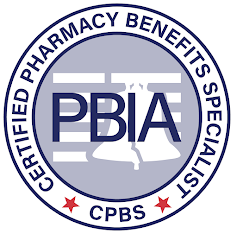The Inflation Reduction Act’s implications for employer-sponsored health plans and other notes from around the interweb:
- The Inflation Reduction Act’s implications for employer-sponsored health plans. The Inflation Reduction Act (IRA) aims to lower prescription drug costs and enhance Medicare benefits. While these changes benefit Medicare recipients, they raise concerns for employer-sponsored health plans that are not part of government price negotiations. These plans could see cost increases due to price shifts, with premiums rising for employers and employees alike. The primary concern is that non-Medicare participants will bear these higher costs as pharmaceutical companies and health care providers raise prices to offset lost revenue. Historically, Medicare’s cost reductions have led to higher prices for employer-sponsored plans. When Medicare sets lower prices for services under Parts A (hospital) and B (outpatient), providers often shift costs to those with private insurance to maintain profitability. This trend is expected to continue under the IRA.
- What to know about brand-name and generic drugs. When choosing medications, patients typically encounter brand-name and generic drugs. While both types are designed to treat medical conditions effectively, understanding their subtle differences can help you make more informed decisions regarding your health. One of the first noticeable distinctions between originator and generic drugs is their name. Generic medications are typically named after the drug’s active ingredient instead of the manufacturer’s brand. The cost and appearance of the medication are also key differentiators. Generic medications are typically 80-85% less expensive than the brand-name version, primarily because they undergo fewer development processes. Although the drugs have the same active ingredients, they do not have to include the same inactive ingredients. This means the medication can appear different in color, shape, or size.
- Pharmacies Accuse GoodRx of ‘Inviting Price-Fixing’ in Series of Antitrust Class Actions. The plaintiff pharmacies alleged that GoodRx, a prescription discount card aggregator, and four of the largest pharmacy benefit managers (PBMs) engaged in a conspiracy to fix prices paid to pharmacies for reimbursement of prescription drug claims. “This case involves an unlawful price-fixing agreement among several PBMs—orchestrated by the PBM rate aggregator, GoodRx—to suppress the prices paid to independent pharmacies for generic drugs,” according to one complaint filed Nov. 1 in the U.S. District Court for the Central District of California by an independent pharmacy, Community Care. The complaints allege that when a pharmacy submits claims for reimbursement from a pharmacy benefit manager and the patient pays with a discount card, that PBM uses GoodRx’s pricing software to determine whether another PBM offers a lower discount card price. If they find one with a lower price, the claim is rerouted to that PBM, which minimizes the reimbursements paid to pharmacies.
- The Need for Regulation to Positively Impact Drug Formulary Decisions to Ensure Appropriate Patient Access: A Little-Discussed Topic in Pharmaceutical Policy and Pricing Debate. Most recently, PBMs have received an increasing amount of scrutiny. Two areas that have received significant attention are the PBMs’ impact on drug pricing and the lack of transparency in their business practices. One issue that has not received a great deal of attention is the misuse of the drug formulary—the foundation of the drug benefit—which consists of a list of medications covered by one’s health insurance. Although some would say that the purpose of drug formularies has remained the same over the past 30-plus years, others would disagree. Initially, drug formularies were developed by a pharmacy and therapeutics committee of a PBM, health plan, or other organization. The committee was made up primarily of clinicians and other experts who determined the safety, efficacy, and unique clinical aspects of the drug. If it met their standards, it was placed on the formulary.

